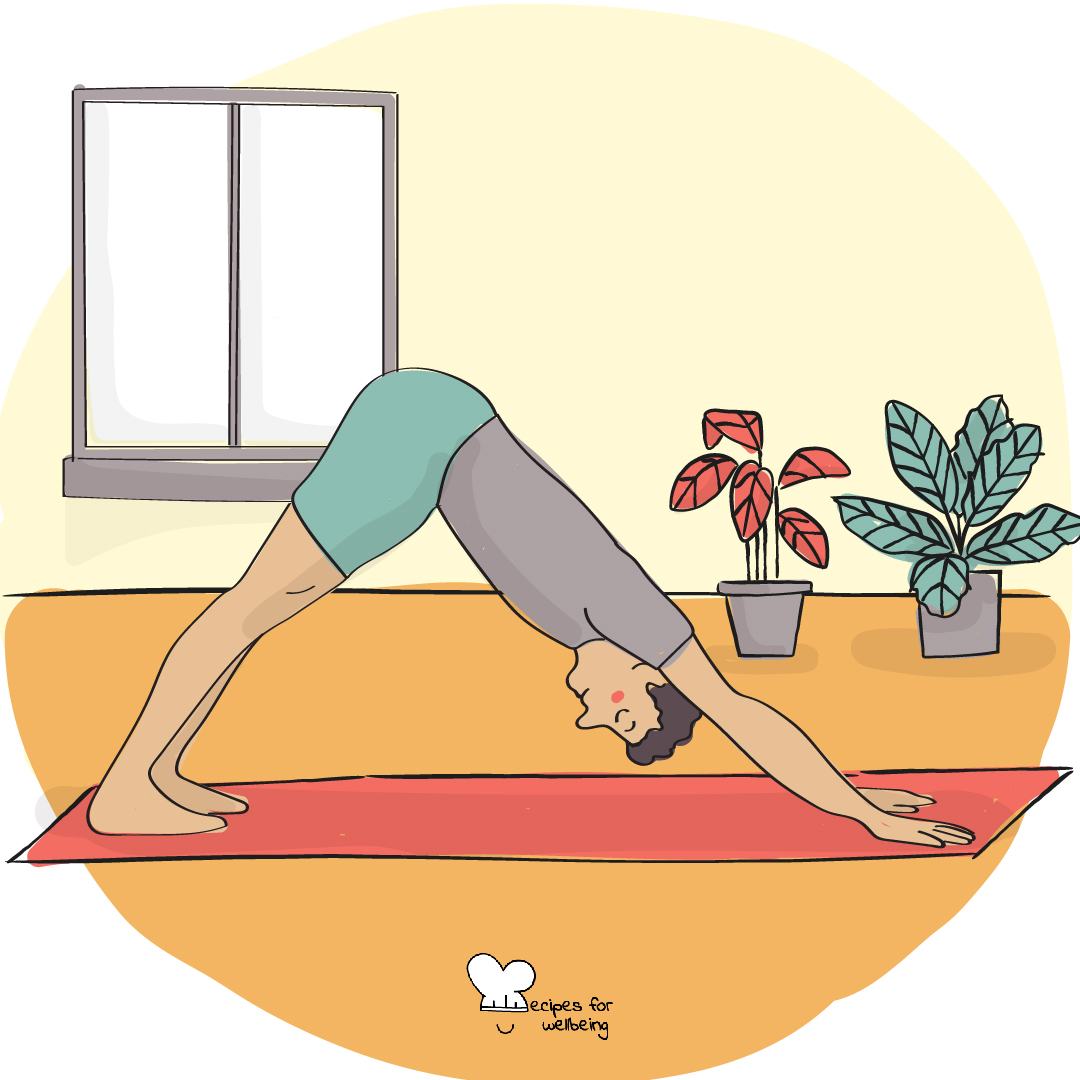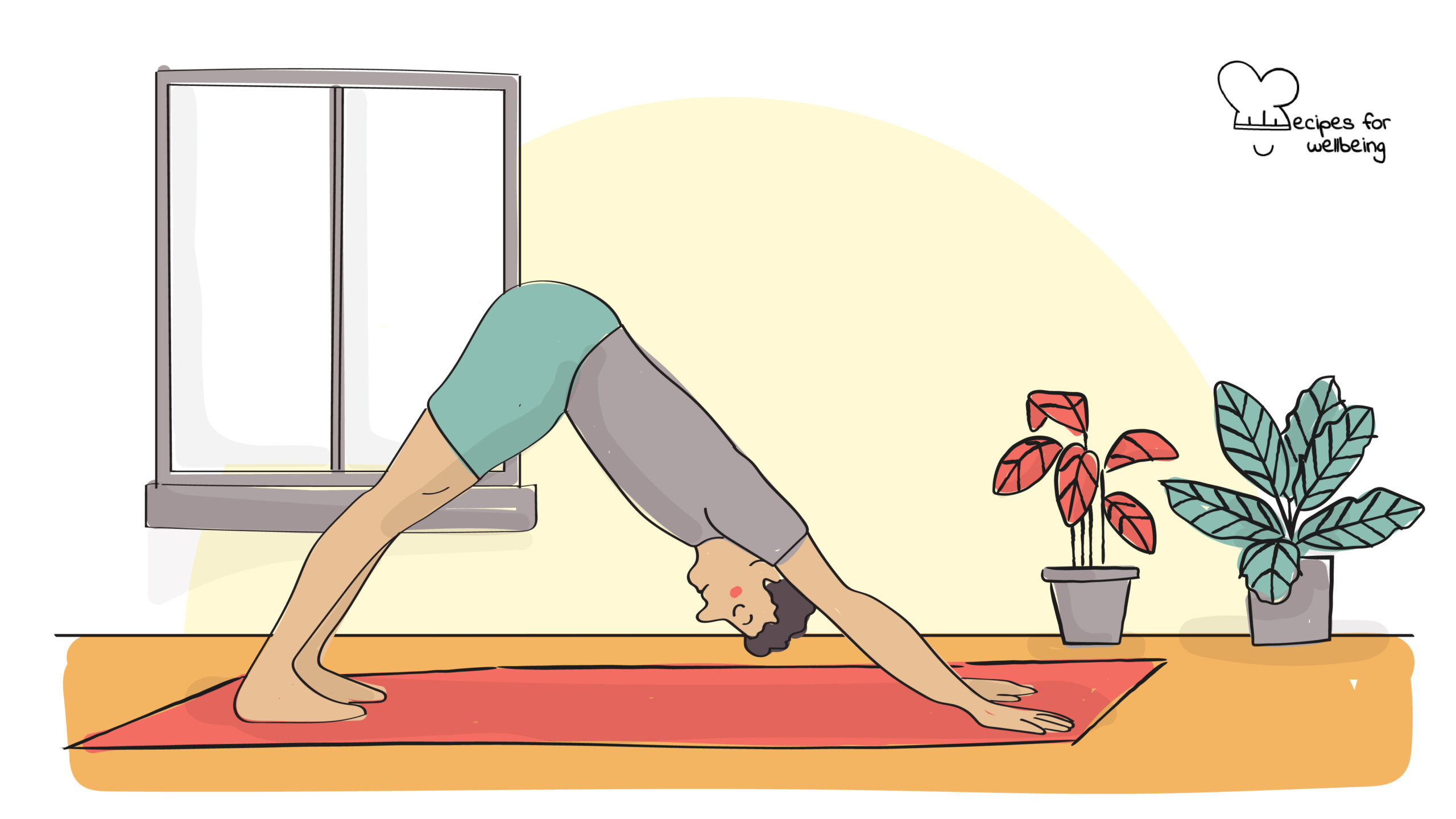
Sun salutation
Yoga teaches us to cure what need not be endured and endure what cannot be cured. ―B.K.S. Iyengar
👥 Serves: 1 person, 11-25 people, 2-10 people, 26-40 people, 41+ people
🎚 Difficulty: Medium
⏳ Total time: 11-30 minutes
🥣 Ingredients: A quiet place with no distractions, yoga mats (1 per person), comfortable clothes
🤓 Wholebeing Domains: Awareness, Meaning, Ritualising
💪 Wholebeing Skills: Centring, Exercising, Flow, Mind-body-connection, Mindfulness, Movement

Sun salutation
📝 Description
A series of postures to start your day feeling centred and aligned.
The Sun Salutation is one of the most ancient routines in the art of yoga and it is highly recommended at the beginning of the day as a way to celebrate the sun, which sustains all life on Earth. The poses enhance your posture, strength, mobility, and focus. There are many versions of the Sun Salutation, so feel free to explore to find the one that works best for you. Also, you can change it up by playing around with the pace. For instance, you can move through the sequence rapidly (by transitioning from one pose to the next each time you inhale or exhale) which is a good way to warm up quickly. Or you can move slowly and deliberately, pausing a few breaths on each pose to enter a more meditative state. Either way, stay alert to the sensations that emerge in your mind and body, without judgement and without wanting them to be anything else than what is in the moment.
👣 Steps
Step 1 – Warm up
Stand at the top of your mat in Tadasana (mountain pose) with legs straight, knees locked, and your palms pressed together above your head in Anjali Mudra (salutation seal). Close your eyes and take a few deep breaths, becoming aware of the sensations in your body and the surrounding environment.
Step 2 – Tadasana (mountain pose)
When you are ready to begin your practice, open your eyes and go back to Tadasana (mountain pose). Stand with your feet slightly apart and parallel to each other. Stretch your arms (but not rigidly) down alongside your torso, palms turned out, shoulders released.
Step 3 – Urdhva Hastasana (upward salute)
Inhale and sweep your arms overhead in wide arcs. If your shoulders are tight, keep your hands apart and gaze straight ahead. Otherwise, bring your palms together, drop your head back, and gaze up at your thumbs.
Step 4 – Uttanasana (standing forward bend)
Exhaling, release your arms in wide arcs as you fold forward. Bend your knees if you feel pressure on your lower back and support your hands on blocks if they don’t reach the floor. Release your neck so that your head hangs heavily from your upper spine.
Step 5 – Ardha Uttanasana (half standing forward bend)
Inhale and push your fingertips down into the floor, straighten your elbows, then lift your front torso away from your thighs. Lengthen the front of your torso as you arch evenly along the entire length of your spine.
Step 6 – High Lunge
Exhale and step your right foot back into a lunge. Centre your left knee over the heel so that your shin is perpendicular to the floor, and bring your left thigh parallel to the floor. Firm your tailbone against your pelvis and press your right thigh up against the resistance. Inhale, reach back through your right heel. Lengthen the torso along the front of the left thigh. Look forward without strain.
Step 7 – Adho Mukha Svanasana (downward-facing dog pose)
Exhale and step your left foot to Down Dog. Spread your palms and soles. Press the front of your thighs back as you press your inner hands firmly against the floor. Imagine that your torso is being stretched like a rubber band between the arms and legs.
Step 8 – Plank pose
Inhale and bring your torso forward until your shoulders are over your wrists. Your arms will be perpendicular to the floor. Try not to let your upper back collapse between the shoulder blades: press your outer arms inward, and then—against this resistance—spread your shoulder blades apart. Firm your tailbone against your pelvis and press your thighs up.
Step 9 – Chaturanga Dandasana (four-limbed staff pose)
Exhale as you bend your elbows and lower down to Chaturanga with your torso and legs parallel to the floor. Keep your shoulders lifted up, away from the floor, and down, away from your ears. Lift the thighs away from the floor, lengthen your tailbone toward your heels, and draw the lower ribs away from the floor to avoid collapsing your lower back. Look down at the floor or slightly forward. If you can’t maintain your alignment, place your knees on the floor until you have built more strength.
Step 10 – Urdhva Mukha Svanasana (upward-facing dog pose)
Inhale, straighten your arms, and sweep your chest forward into Up Dog. Keep your legs active, firm your tailbone toward your heels, and press your front thighs upward. Draw your shoulders away from your ears. Look straight ahead or look slightly upward.
Step 11 – Adho Mukha Svanasana
Exhale back to Down Dog.
Step 12 – High lunge
Step the right foot forward into a Lunge.
Step 13 – Ardha Uttanasana
Inhale into Ardha Uttanasana.
Step 14 – Uttanasana
Exhale into Uttanasana.
Step 15 – Urdhva Hastasana
Inhale into Urdhva Hastasana.
Step 16 – Tadasana
Exhale to Tadasana. Observe your body and breath. Repeat steps 3-15 (make sure to change the foot of the lunge each time) until you complete 6-8 repetitions or as many as you wish. Conclude in Tadasana with your eyes closed to allow your awareness to focus inward.

